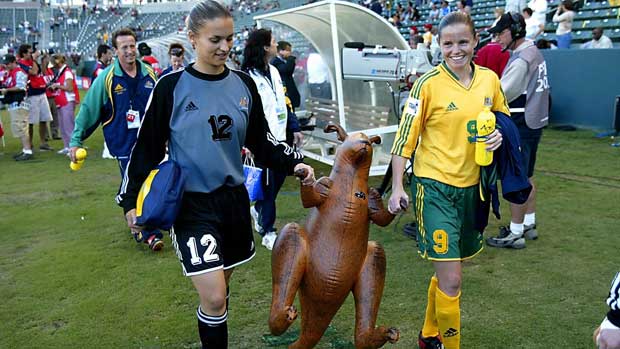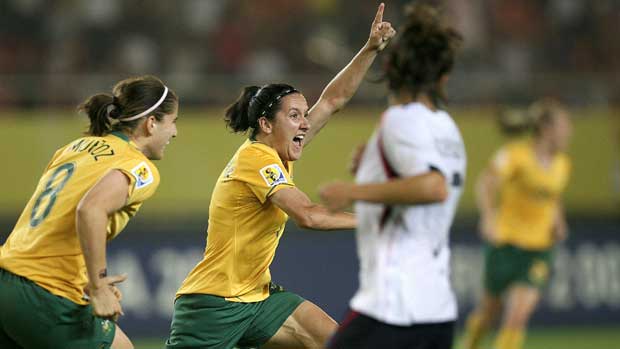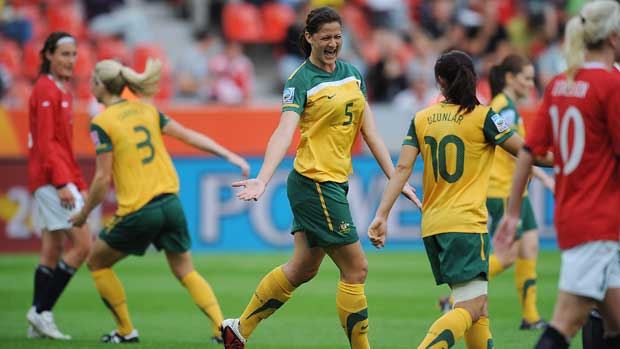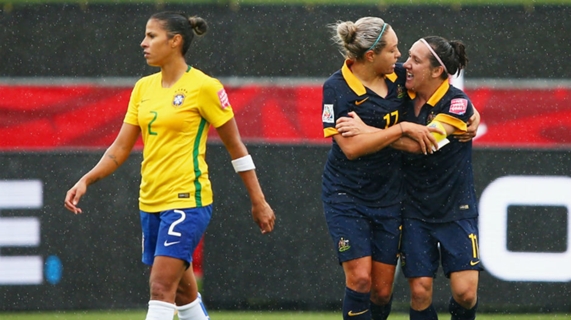Australia’s rise as a women’s football powerhouse hasn’t happened overnight.
From humble beginnings, Australia is now a world football power with an electrifying group of players cleverly coached by Alen Stajcic .
It’s all in place for a glorious future ahead of World Cup 2019 and beyond.
Here, we take you back to the late 1970s and chart the rise of our national team.
The pioneers
The historic first Australian women's team was established in 1978 to take part in the first World Women's Invitational Tournament in Chinese Taipei.
Australia, who ultimately finished eighth, was the only national team in the tournament with the other twelve countries represented by strong club or district teams.
Young Australian Anna Senjuschenko (who tragically died in a car accident in 1979 aged 17) was voted a star player of the tournament by the media, while captain Connie Byrnes was awarded ‘Miss Football’ for Australia.
The national women’s team played on sporadic occasions throughout the 1980s, with only a limited number of major international competitions enticing much attention to the team.

The introduction of the FIFA Women’s World Cup and women’s football at the Olympic Games in the 1990s, combined with a surge in participation levels throughout the country, sparked renewed interest in the national women’s team, now called the Westfield Matildas.
FIFA WORLD CUPS
After barely being beaten out of a place at the inaugural FIFA Women’s World Cup in China in 1991 on goal difference, by New Zealand in the Oceania qualifiers, the Australian women’s national team has never failed to qualify for the World Cup.
Australia appeared to gradually learn and improve throughout each of its first few World Cup forays, as the aggregate goal differences over each World Cup shows: a goals for-and-against record of 3-13 (minus 10) in its 1995 World Cup matches reduced to minus 4 in 1999, and went down to minus 2 in the 2003 campaign.
2007 in China
With Australia’s entry into the Asian Football Confederation (AFC) in 2006, the Westfield Matildas qualified for the 2007 World Cup via Asia for the first time after reaching the final of the 2006 AFC Women’s Asian Cup.

Australia finished as runners-up in the Asian tournament, going down to China on penalties in the final in Adelaide.
By the 2007 tournament, Australia attained a positive goal difference over the four matches, which included its first World Cup finals win (4-1 over Ghana) and quarter-final appearance (a 2-3 loss to Brazil) displayed how far the Aussie women’s team had come over the previous 12 years.
Further testament to the team was provided when coach Tom Sermanni was named 2007 AFC Coach of the Year.
2011 in Germany
In a memorable 2010 Women’s Asian Cup in China, Australia defeated Korea DPR on penalties in the final, earning another shot at the World Cup.
In the 2011 World Cup in Germany, the Westfield Matildas again put on a solid showing, progressing from the group stage after a come-from-behind win against Norway, and losing to the world’s fifth-ranked nation Sweden in the quarter final.

In a tournament where Australia had the third youngest team, with an average age of 22, the team received many plaudits for their style of play and character.
With its strong showing at Germany 2011, Australia rose to a top ten placing in the July 2011 FIFA rankings for the first time, and has maintained a top ten ranking in almost every update since.
2015 in Canada
Following another impressive performance at the 2014 Women's Asian Cup in Vietnam, the Westfield Matildas put on its best effort in a World Cup at the 2015 edition in Canada.
An increase in number of teams in the World Cup, from 16 to 24 for the 2015 tournament, signaled the increased prominence and standard of women's international football.

After finishing second in the group stage to eventual tournament winners United States, Australia won its first World Cup knock-out stage match 1-nil over Brazil, before succumbing to Japan at the quarter-final stage.
Japan had become a nemesis team for the Matildas, with the 1-nil win to 'Nadeshiko Japan' in the 2015 World Cup quarter final replicating the score at the Women's Asian Cup final a year earlier.
Looking ahead to France 2019
The 2017 Tournament of Nations success further increased the profile of the Westfield Matildas both domestically and internationally, increasing expectations and setting the scene for an even brighter future for the national women's team.
And with the 2019 World Cup in France to plan for, the Matildas loom as one of the world’s most dangerous sides. It’s a squad that can go very far.
Tomorrow, we look at the Matildas’ Olympics history
